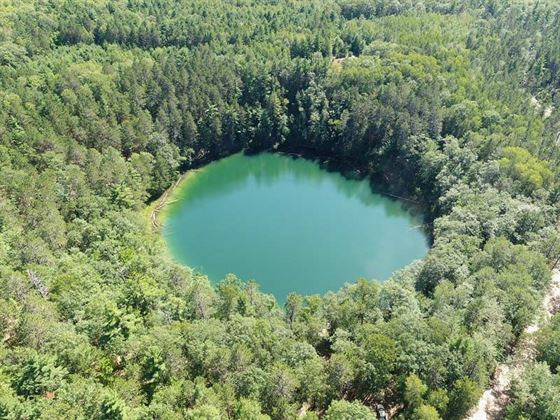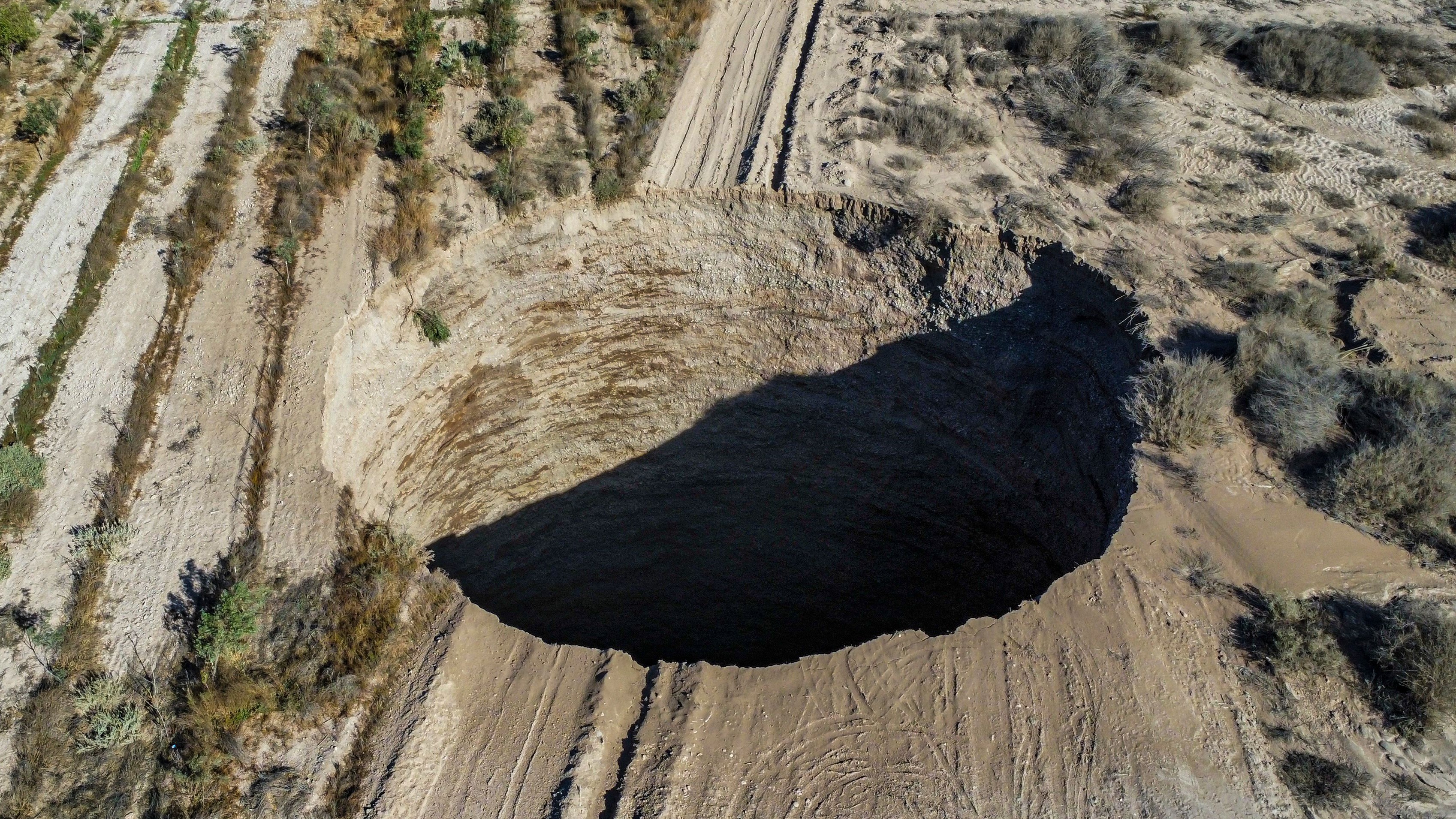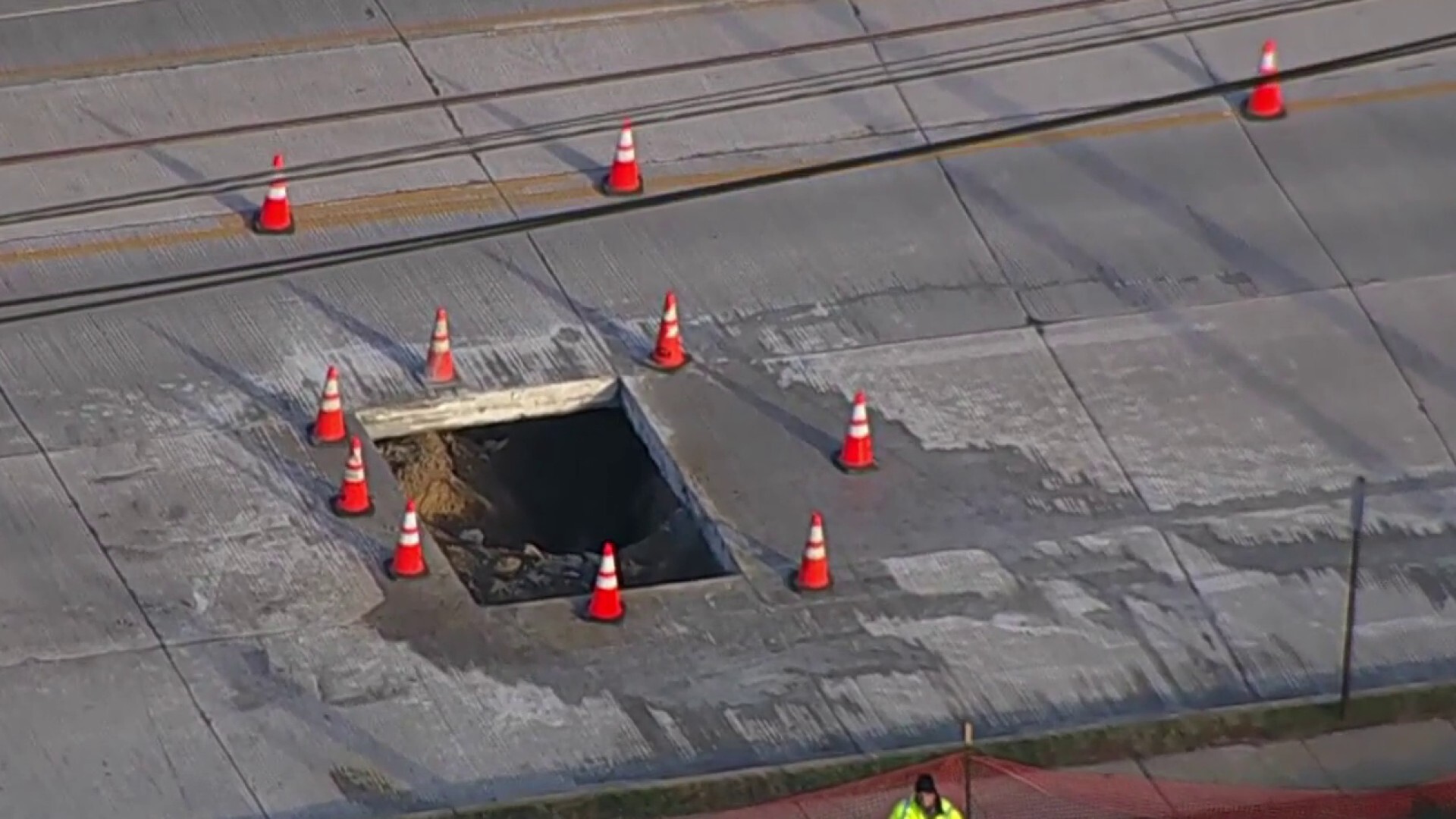Topic sinkhole causes: Discover the fascinating world of sinkholes, exploring their natural and human-induced causes, and how understanding these phenomena can help us mitigate risks and protect our communities.
Table of Content
- What are the common causes of sinkholes?
- Natural Causes
- Human-Induced Causes
- Prevention and Mitigation
- Introduction to Sinkholes: Understanding the Basics
- Natural Causes of Sinkholes
- Human-Induced Causes of Sinkholes
- YOUTUBE: How Sinkholes Form
- Impact of Climate Change on Sinkhole Formation
- Preventive Measures and Mitigation Strategies
- Case Studies: Real-World Examples of Sinkhole Occurrences
- Monitoring and Early Warning Systems
- Future Trends in Sinkhole Research and Management
- Conclusion: Living Safely in Sinkhole-Prone Areas
What are the common causes of sinkholes?
There are several common causes of sinkholes:
- Decline of water levels due to factors such as drought or groundwater pumping.
- Disturbance of the soil from activities like construction, mining, or drilling.
- Naturally acidic rainwater eroding underlying bedrock.
- Dissolution of limestone causing pores and cracks to enlarge.
READ MORE:
Natural Causes
- Water Dissolution: The most common cause of sinkholes. Water, especially acidic rainwater, dissolves carbonate rocks such as limestone, gypsum, and dolomite, creating underground cavities.
- Karst Processes: In karst terrains, the dissolution of soluble rocks leads to the development of underground drainage systems and cavities, which can eventually collapse to form sinkholes.
- Heavy Rainfall: Sudden heavy rains can trigger the collapse of underground cavities, especially after periods of drought, leading to the rapid formation of sinkholes.

Human-Induced Causes
- Groundwater Pumping: Excessive extraction of groundwater lowers the water table, leading to the collapse of underground cavities.
- Construction and Development: Poorly compacted soil after excavation work, or heavy structures built on vulnerable land, can trigger sinkhole formation.
- Plumbing Leaks and Broken Pipes: Water from leaks can erode underground cavities, leading to sinkholes, while broken pipes can also create voids that collapse.
- Mining Activities: The removal of underground materials can create voids that may collapse, forming sinkholes.
Prevention and Mitigation
To reduce the risk of sinkhole formation, it is essential to conduct thorough geological surveys before construction, manage groundwater resources sustainably, and monitor known sinkhole-prone areas regularly.
Introduction to Sinkholes: Understanding the Basics
Sinkholes are fascinating natural phenomena that occur around the world, forming depressions or holes in the Earth"s surface. They vary in size and depth, affecting both rural and urban areas, and can result from a variety of natural and human-induced factors.
- Sinkholes typically form in regions known as karst terrain, where soluble rocks like limestone, dolomite, and gypsum can be dissolved by groundwater, creating underground cavities.
- When the roof of these cavities collapses, it creates a sinkhole on the surface. This process can be gradual or sudden, posing risks to buildings, roads, and other infrastructure.
- Factors such as heavy rainfall, drought, groundwater pumping, and construction activities can influence the formation of sinkholes, highlighting the importance of understanding their causes and mechanisms.
This section delves into the basics of sinkholes, shedding light on their types, causes, and impacts, and setting the stage for a deeper exploration of how they can be predicted, managed, and mitigated.
Natural Causes of Sinkholes
Natural processes play a significant role in the formation of sinkholes, primarily through the dissolution of soluble rocks and changes in the natural water drainage system. These geological and hydrological processes create conditions that lead to the development of sinkholes.
- Water Dissolution: Acidic rainwater seeps into the ground, slowly dissolving carbonate rocks like limestone, leading to the formation of underground cavities and voids.
- Karst Processes: Areas with soluble rocks, known as karst terrains, are especially prone to sinkhole formation. Over time, water erodes these rocks, creating underground channels and caves that can collapse, forming sinkholes.
- Heavy Rainfall: Intense rainfall can accelerate the dissolution of rock and the expansion of underground cavities. When the support for the land above these cavities weakens, it can suddenly collapse, creating a sinkhole.
- Natural Groundwater Changes: Fluctuations in groundwater levels, whether due to natural reasons like prolonged drought or excessive rainfall, can lead to the formation of sinkholes by destabilizing the ground.
Understanding these natural causes is crucial for assessing sinkhole risks and implementing effective management and mitigation strategies to protect communities and infrastructure.

Human-Induced Causes of Sinkholes
While natural processes play a significant role in the formation of sinkholes, human activities contribute significantly to their development. Understanding these causes is crucial for prevention and management.
- Water Management Issues: The alteration of natural water drainage systems through activities such as the construction of buildings, roads, and water diversion systems can lead to sinkhole formation. The added weight and altered water flow can trigger collapses.
- Groundwater Pumping: Over-extraction of groundwater for irrigation, industrial, or domestic use can remove the support of underground cavities, leading to their collapse.
- Construction and Development: Heavy construction and the addition of buildings or roads can increase stress on the subsurface, triggering sinkholes. Improperly compacted soil after excavation work can also create voids that eventually collapse.
- Industrial Activities: Mining, drilling, and the storage of heavy materials can create underground spaces or weaken existing ones, leading to sinkhole formation.
- Plumbing Failures: Leaking or broken water, sewer pipes, and septic systems can erode underground cavities or add unexpected water to the subsurface, promoting sinkhole development.
These human-induced factors, combined with natural conditions, underscore the importance of careful land use planning and water management to mitigate the risk of sinkholes.
How Sinkholes Form
Formation: \"Discover the breathtaking process of natural formation in action! Watch as majestic landscapes and stunning geological structures come to life before your eyes in this captivating video showcasing the beauty of creation.\" Erosion: \"Explore the fascinating world of erosion and witness the transformative power of nature at work. From awe-inspiring canyons to intricate rock formations, this video promises to amaze and educate with stunning visuals.\"
Causes of Sinkholes
What causes sinkholes? Subscribe to WESH on YouTube now for more: http://bit.ly/1dqr14j Get more Orlando news: ...
Impact of Climate Change on Sinkhole Formation
The role of climate change in influencing sinkhole formation is becoming increasingly evident, with significant impacts observed in various regions around the world. The changing climate contributes to more extreme weather patterns, including increased rainfall intensity, droughts, and temperature fluctuations, all of which play a crucial role in sinkhole development.
- Increased rainfall and flooding can lead to a sudden rise in groundwater levels, destabilizing the ground and triggering sinkholes, especially in areas with soluble rock layers beneath the surface.
- Extended periods of drought cause a drop in groundwater levels, which can remove the support for underground cavities, leading to their collapse and the formation of sinkholes.
- Temperature fluctuations can affect the solubility of carbonates in groundwater, accelerating the dissolution process of limestone and other susceptible rocks, thus increasing the risk of sinkholes.
- Human activities, such as groundwater pumping for irrigation, are exacerbated by climate change, leading to more frequent and larger sinkholes, particularly in agricultural regions.
- Research indicates a strong correlation between climate change and the occurrence of sinkholes, with studies showing that for every 0.1C rise in global temperature, the number of sinkholes increases by 1 to 3 percent.
Efforts to predict and mitigate the impacts of sinkholes are underway, including the use of ground-penetrating radar and soil samples to identify potential sinkhole development areas. Understanding the interplay between climate change and sinkhole formation is crucial for developing effective strategies to manage and reduce the risks associated with these natural phenomena.
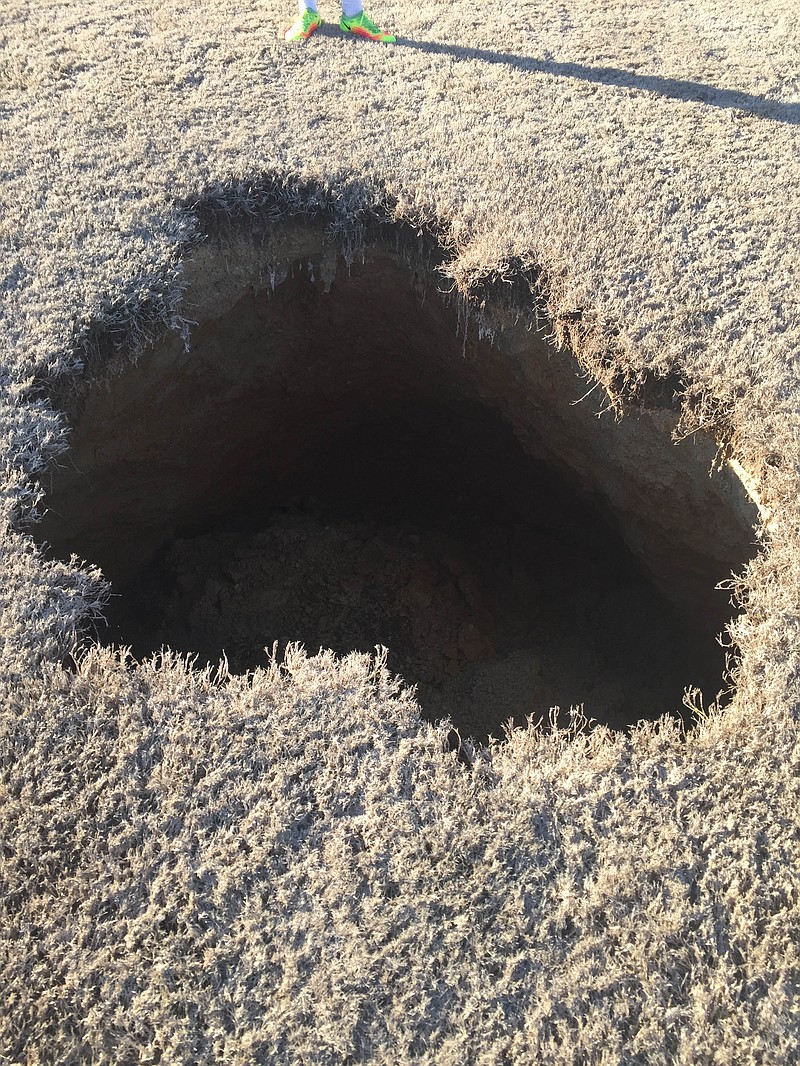
Preventive Measures and Mitigation Strategies
To mitigate the risks associated with sinkholes and prevent their occurrence, a comprehensive approach combining professional assessments, infrastructure management, and environmental considerations is essential. Implementing these strategies can significantly reduce the potential for damage and ensure the safety of affected communities.
- Professional Inspections: Regular inspections by experts can identify potential risks and structural vulnerabilities, offering critical early warnings and recommendations for risk mitigation.
- Infrastructure Management: Maintaining and upgrading essential infrastructure, such as water and sewer lines, to prevent leaks that could erode underground cavities is crucial. Proactive measures include cross-checking pipelines and replacing aging infrastructure before failures occur.
- Engineering Solutions: Utilizing engineering techniques like grouting, soil stabilization, and the installation of supporting piers can enhance ground stability, especially in areas known for sinkhole activity.
- Environmental and Land Use Planning: Avoiding development in high-risk areas through informed land use planning and zoning, coupled with effective groundwater management, can prevent sinkholes. This includes controlling water table fluctuations and managing surface runoff to maintain soil integrity.
- Monitoring and Early Warning Systems: Deploying technologies for early detection, such as ground-penetrating radar, can identify imminent sinkholes, allowing for timely interventions.
- Public Awareness and Preparedness: Educating communities about the signs of potential sinkholes and appropriate response measures can enhance public safety and readiness.
By integrating these preventive and mitigation strategies, communities can safeguard against the destructive impact of sinkholes, protecting property, infrastructure, and lives. It"s a collaborative effort involving government agencies, professionals, and residents to ensure a resilient approach to sinkhole risks.
Case Studies: Real-World Examples of Sinkhole Occurrences
Case studies of sinkhole occurrences provide valuable insights into their causes, impacts, and the measures taken for mitigation. Here, we examine two distinct cases: the Ripon sinkhole in the UK and a sinkhole event in Florida, USA, influenced by global warming.
Ripon Sinkhole, February 2014
In Ripon, a city known for its underlying gypsum deposits, a significant sinkhole event occurred in February 2014. Gypsum, a highly soluble rock, can dissolve rapidly, leading to the formation of cavities and subsequent sinkholes. This particular sinkhole led to the partial collapse of a residential house, showcasing the dramatic effects of natural geological processes on human structures. The event emphasized the importance of understanding local geology and the potential risks it poses to buildings and infrastructure.
Florida Sinkhole Collapse Influenced by Global Warming
A study highlighted a case in Florida where sinkhole collapses were linked to global warming. The research discussed the relationship between climate change factors, such as increased temperature and altered precipitation patterns, and their impact on sinkhole formation. This case study serves as a reminder of the complex interplay between environmental changes and geological hazards, underscoring the growing need for integrating climate change considerations into sinkhole risk management strategies.
These examples underline the diversity of sinkhole triggers, from natural geological processes to human-induced changes in the environment. They also highlight the importance of ongoing research, monitoring, and adaptation in managing sinkhole risks and protecting communities.
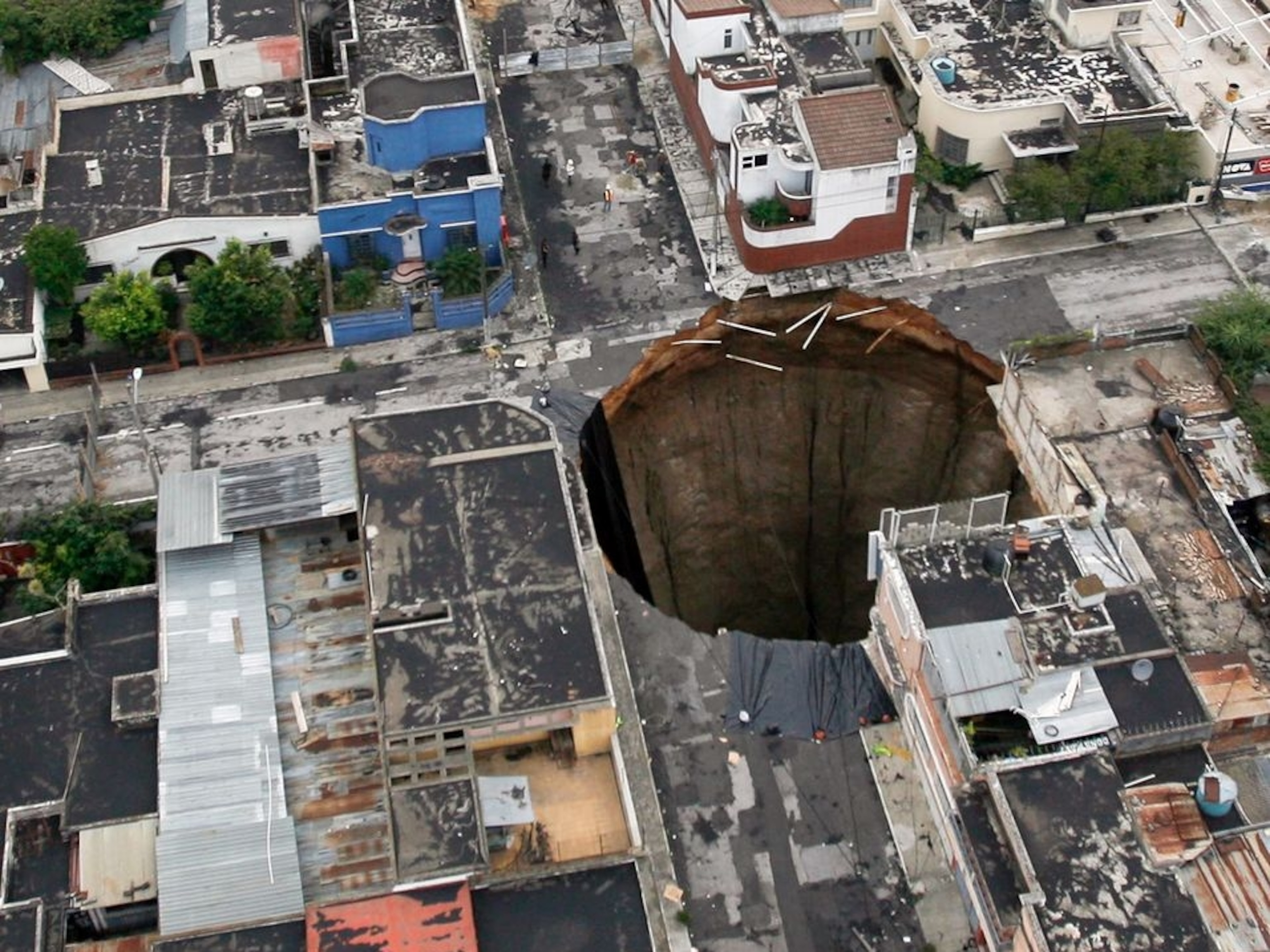
Monitoring and Early Warning Systems
Monitoring and Early Warning Systems for sinkholes are crucial in mitigating risks associated with ground collapses, especially in areas known for their susceptibility to sinkhole formation. These systems incorporate various technologies and methodologies aimed at detecting early signs of ground subsidence that precedes sinkhole collapses, enabling timely interventions to prevent damage to infrastructure and loss of life.
One of the primary methods used for sinkhole monitoring is satellite interferometry, which can detect precursory ground deformations over wide areas. However, this method faces limitations in temporal and spatial resolution, making it suitable primarily for detecting larger sinkholes. Despite these challenges, satellite interferometry has been successful in areas with a high density of sinkholes, such as along the Dead Sea in Israel and in the Ebro Valley in Spain, by measuring ground subsidence that anticipates sinkhole occurrences.
In addition to satellite-based methods, ground-based monitoring techniques, such as the use of topographical instruments like total stations and GNSS antennas, provide the necessary frequency, accuracy, and spatial precision for early warning. These instruments, however, are typically limited to monitoring specific elements at risk within a sinkhole-prone area, such as certain buildings or strategic roads.
The use of drones and airborne LiDAR (Light Detection and Ranging) has also been explored for sinkhole detection. While drones offer a novel approach to identifying ground deformations, their utility for continuous monitoring is limited due to data processing time constraints. Airborne LiDAR, on the other hand, has shown potential in detecting fast-moving sinkholes with a high degree of accuracy, although it is not ideal for ongoing monitoring purposes.
Despite the technological advances in monitoring and early warning systems, challenges remain, such as the need for high temporal resolution to detect rapid ground movements and the ability to monitor wide areas effectively. Innovations in ground-based interferometry and the development of semi-automatic processing systems for InSAR monitoring, as demonstrated along the Dead Sea shores, represent significant steps forward in overcoming these obstacles.
Ultimately, the effectiveness of sinkhole monitoring and early warning systems lies in their integration into comprehensive risk management strategies, including hazard mapping, urban planning, and public awareness campaigns, to mitigate the impact of sinkholes on communities and infrastructure.
Future Trends in Sinkhole Research and Management
Advancements in sinkhole research and management are increasingly focusing on integrating high-resolution data and innovative technologies to better understand, predict, and mitigate the risks associated with sinkholes in karst and pseudokarst regions. Recent studies highlight the integration of Interferometric Synthetic Aperture Radar (InSAR) with Artificial Neural Networks (ANN) for improved sinkhole susceptibility mapping, showcasing a significant shift towards utilizing machine learning and remote sensing technologies for geohazard assessment and management.
For instance, the integration of InSAR and ANN in the Kirikkale-Delice Region of Turkey has proven effective in identifying sinkhole-prone areas by analyzing ground deformations. This approach not only enhances the accuracy of sinkhole susceptibility maps but also offers a cost-effective and time-efficient alternative to traditional field surveys, which are often limited by accessibility and scalability issues.
Moreover, the U.S. Geological Survey"s recent efforts to map sinkhole susceptibility across the conterminous United States using high-performance computing and heuristic models highlight a growing trend towards developing national-scale assessments. These assessments incorporate factors related to geology, soils, precipitation extremes, and development to identify potential sinkhole hotspots and support national planning efforts. This represents a significant step forward in creating uniform indexes of sinkhole potential that can guide infrastructure development and urban planning in a proactive manner.
The future of sinkhole research and management is likely to see further integration of advanced geospatial technologies, including drone imagery and LiDAR, alongside InSAR and machine learning models. This multidisciplinary approach aims to enhance our understanding of the complex processes leading to sinkhole formation and improve our ability to predict and mitigate their impact on society.
As the field evolves, continuous monitoring and updating of sinkhole susceptibility maps with the latest data will be crucial for the effective management of sinkhole risks, particularly in regions undergoing rapid urbanization and environmental change.
:max_bytes(150000):strip_icc()/__opt__aboutcom__coeus__resources__content_migration__mnn__images__2018__02__SinkholeSunsetParkBrooklynNYC2015-7a37dc7f44cd42feb4accf2cfc4cc0f6.jpg)
READ MORE:
Conclusion: Living Safely in Sinkhole-Prone Areas
Living in areas prone to sinkholes requires awareness and proactive measures to mitigate risks. Understanding the natural and human-induced factors that contribute to sinkhole formation is crucial for safety and prevention. Natural factors include the dissolution of carbonate rocks like limestone by groundwater, while human activities such as over-pumping of groundwater, construction, and changes in drainage can exacerbate the situation.
To live safely in sinkhole-prone areas, consider the following strategies:
- Geological Surveys: Before purchasing property, conduct a thorough geological survey to assess sinkhole susceptibility.
- Water Management: Properly manage water runoff and avoid altering natural drainage patterns to reduce the risk of sinkhole formation.
- Monitoring: Regularly monitor the condition of the property and surrounding area for signs of subsidence or depressions, which may indicate the beginning stages of a sinkhole.
- Construction Practices: Employ sinkhole-resistant construction practices, such as avoiding the placement of heavy structures in areas known to be sinkhole-prone and ensuring proper soil compaction.
- Emergency Planning: Have an emergency plan in place, including insurance coverage for sinkhole damage and a clear evacuation strategy.
- Community Awareness: Stay informed about local geological conditions and participate in community efforts to manage sinkhole risks effectively.
While natural sinkholes cannot be entirely prevented, understanding the underlying causes and taking preventative measures can significantly reduce the risk to life and property. By respecting the delicate balance of our geological environment and adopting responsible land and water use practices, communities can coexist more safely with the natural processes that shape our world.
Understanding the multifaceted causes of sinkholes, from natural geological processes to human activities, highlights the importance of responsible land use and the need for advanced monitoring to live safely in sinkhole-prone areas.

